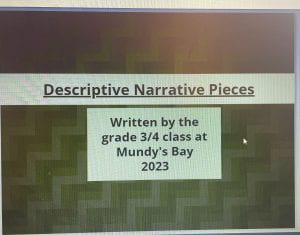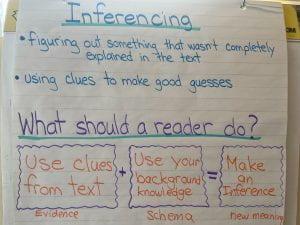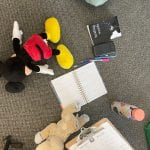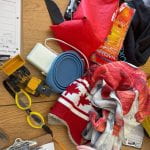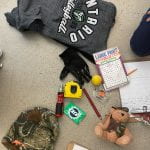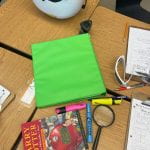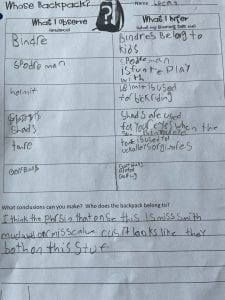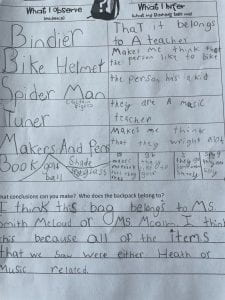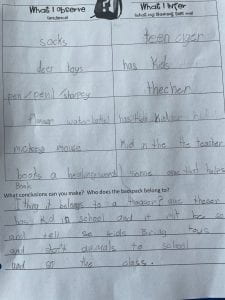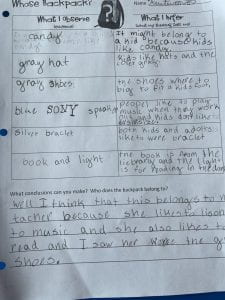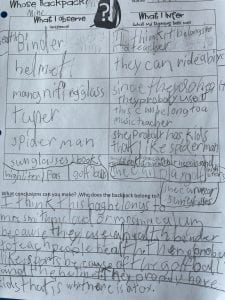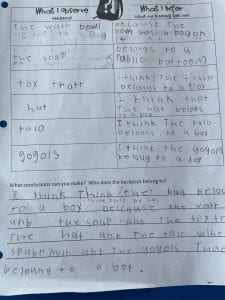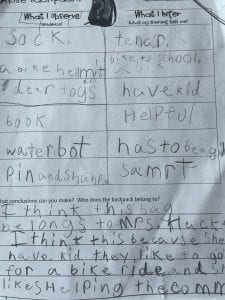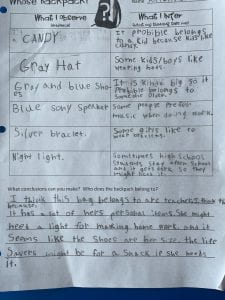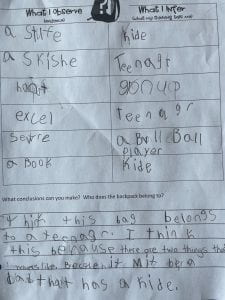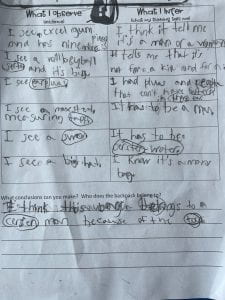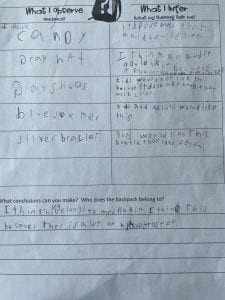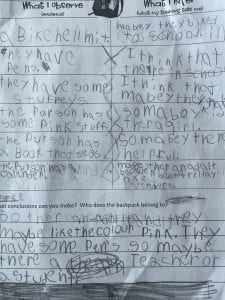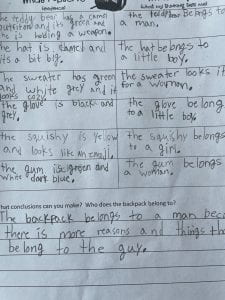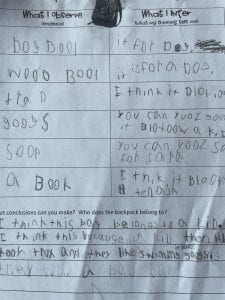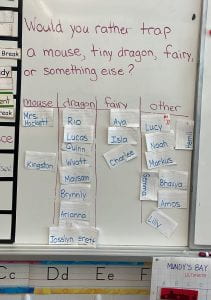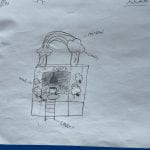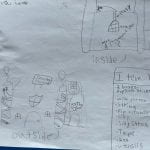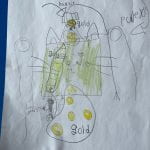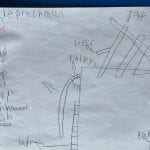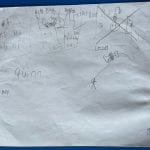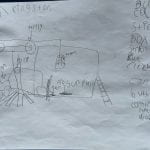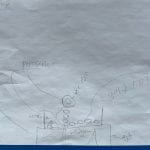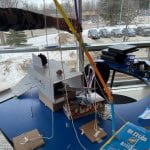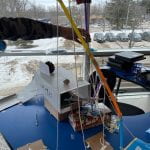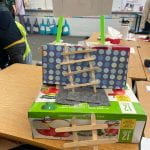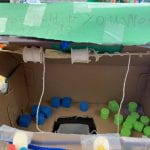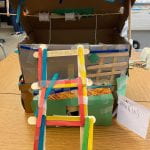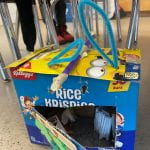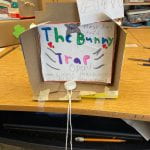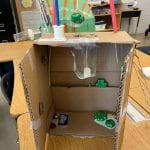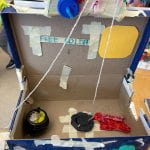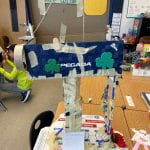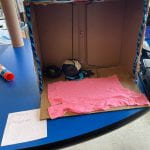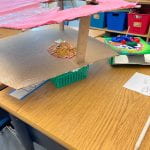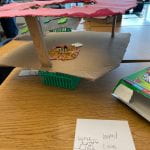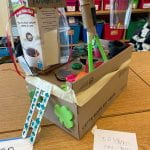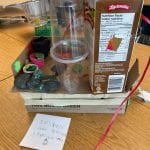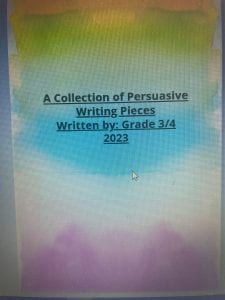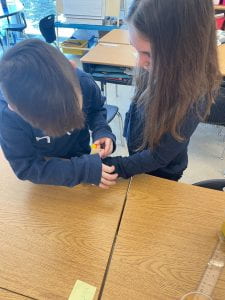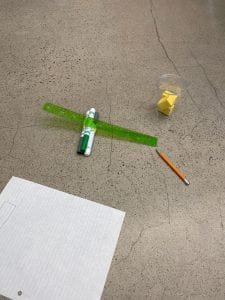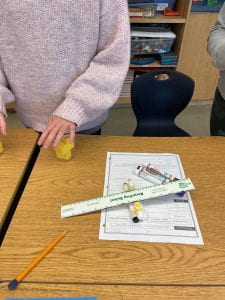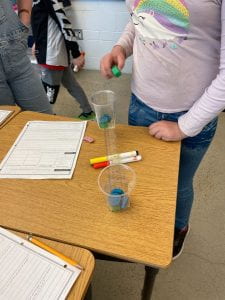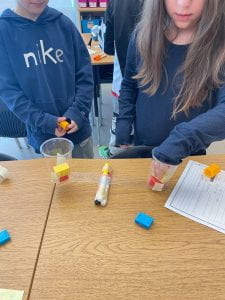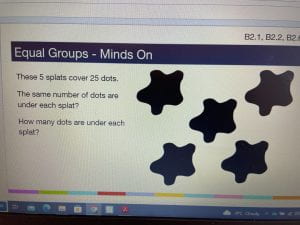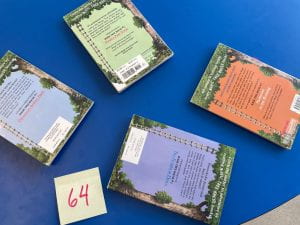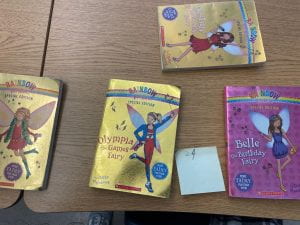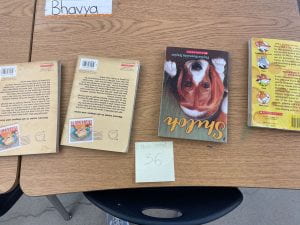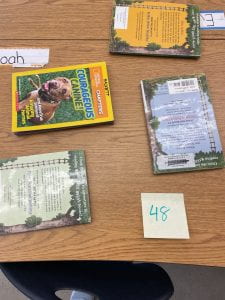Author Archives: cindyhackett
Descriptive Writing with Jumanji
We first read the book, “Jumanji” by Chris VanAllsburg. Many students had seen the movie but hadn’t read the book. We discussed the writing strategy of “stretching the moment”, and “show-not tell”. Students chose one moment from the book and wrote more about it as if they were the character playing the game.
Here is the collection of writing the students created: Just click on the picture below
Ways Writers Invite Readers To Think!
Asking Deep-Thinking Questions
This lesson started out with a quick discussion around the difference between quick questions and deep-thinking questions.
Then, we read a fun story that we all connected to. We have all had the experience of feeling bored. In this story the main character asks a lot of deep-thinking questions.
After identifying the deep-thinking questions and discussing possible answers, we added Thinking Stems to our Inferencing anchor chart.
The next step was to begin writing our own questions. We used Padlet to collect and organize everyone’s questions.
Tomorrow we’ll use those sentence stems to write a paragraph to answer some of those questions!
An Introduction To Inferencing
We have begun a literacy unit with Inferencing.
First we discussed the meaning of inferencing and what that looks like while reading. An anchor chart was created as we talked.
Then, students were given a bag of items with instructions to use the clues to determine who the bag might belong to.
Here’s what each group had inside their bags:
Students recorded their evidence and made their inferences. Our next step will be to establish thinking stems to help write our thoughts clearly and with detailed explanations.
Visitors: What do you think? Do you agree or disagree with the students? Who do the bags belong to?
Traps Galore!
After a very busy week of planning, building, revising, adjusting, and sharing students finished their trap project. This project was a consolidation of science concepts that they had been working on for the past month within the structures and mechanisms unit. Students combined their knowledge of strong and stable structures with knowledge of the force of simple machines including gears, pulleys, levers, and inclined planes to design and build a trap.
Students got into groups and began to plan. There was a lot of discussion as they learned to compromise and share ideas in a respectful way. Students drew their design, labelled various parts and made a list of materials needed.
Then students got down to building! Our classroom turned into a VERY busy construction site! The project prompted a lot of problem solving and discussion. Once the building was completed the grade 1’s came in to view the projects giving our class a chance to share their learning. It was certainly a project to be proud of!
A HUGE thank-you to all of the families that donated building supplies! Your support is greatly appreciated!
Persuasive Writing
Testing Levers
The grade 4’s are continuing their study of machines and mechanisms. Today they began an inquiry around levers.
We started out with a question:
Then it was time to investigate. Students followed directions to complete the following experiment: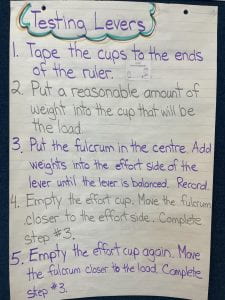
Students:
- If you had to move a heavy boulder in order to dig a new garden, how would you design your lever? Think about the materials you would use and where you would position the fulcrum.
- If you had to move a pile of stones to put around the edge of your garden, what kind of lever would you use? Would it be the same or different from the lever to move the boulder? Explain.
Multiplying With Pattern Blocks
Equal Groups Challenge
Today, students were challenged to think about breaking numbers apart into equal groups.
The first question they were presented with was a Minds On question:
Then it was time for the challenge! Students chose a number of counters. Then they split their counters into 4 equal groups and covered the groups. The total number of counters was displayed on a sticky. Students then moved around the room, trying to figure out the number of counters of each book.
The next step: Students will change the number of equal groups they make, exploring a greater number of multiplication equations.

